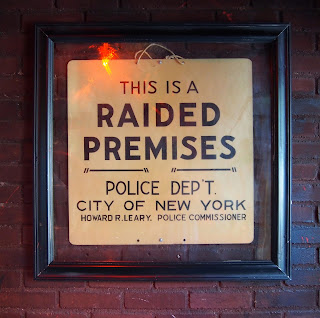A Hero Wiped From History
In today's world, we are facing so many seemingly insurmountable conflicts. On a daily basis, there is a new story about another injustice. Rife with war, corruption, and hate, it is hard to imagine that there could ever be an end to it. While there is no one quick fix or cure-all way to solve all problems, there are a number of ways to view these issues, better understand their causes and how to address them. In my Humanities class, Global Peace, we studied different forms of non-violent protest. Before understanding how to be non-violent it is important to establish what is violence. When simplified, there are 3 kinds of violence, cultural, social and direct. Cultural violence is the unspoken stigmas of a community or society that can establish, normalize and justify violence and oppression. Cultural violence is part of the bedrock that creates structural violence. Structural violence is harm from a formal institution, government or any other body of power that targets and oppresses people in order to maintain control. The third kind of violence is direct violence, a specific incidence or act harming a person or group of people. Generally, direct violence occurs as a result of cultural and structural violence manifesting in people to the point that an individual feels the need to act on their hate. As it is called global peace it was guided by 4 of Gandhi’s principles, debatably the biggest influence on peaceful protest in recent history. The first method, sarvodaya, is the uplifting of all. If you bring up one person you are uplifting all. When attempting to create a better, more ideal world you must start by helping the lowest of the low. The second principle, swadeshi, is about local and central economies. When you buy and trade locally that money goes back into the community, rather than a disconnected and omnipotent cooperation that has no interest in the welfare of the community. Satyagraha, the third principle, is truth system or truth force. Especially it is the choice of complete non-violent resistance, bringing suffering onto yourself rather than the opposing side for the betterment of all. It is easy to kill your enemy and wish them all the ill in the world, but when you do this you only divide people and communities farther apart. The fourth and final principle is swaraj, meaning self rule, real power and real change must come from the grassroots level. A government should be made as local as possible, to keep the interest and opinion of all people at the forefront. The ranking of power from most to least important according to swaraj goes: self republic, family republic, village republic, district, state, national, and last the entire world. Knowing all of these methods are important but before they can be implemented you need to understand the issue you want to address. You can do this by using a method of conflict analysis. We studied 3 of forms of this in class, the iceberg, the tree and the ladder of tolerance. Each one has different ways of looking at conflict beyond face value but all, in essence, ask 2 questions. What are the root causes? What are the effects they have?
After learning about violence, peace, and protest in all their forms each student selected a nonviolent activist from history to research and write about. The activist I selected was Sylvia Rivera, a trans woman who fought for the rights of trans people. She did this at a time when so few did and even fewer had made any substantial progress. In spite of the cultural and structural violence she faced, she was never daunted and kept fighting until she died. In her 50 years of her life, she made real change and is credited as one of the founders of modern LGBT pride movement. The sheer determination and grit that Rivera had is something that I aspire to, and I think that anyone regardless of identity can learn from her methods and her message.
After learning about violence, peace, and protest in all their forms each student selected a nonviolent activist from history to research and write about. The activist I selected was Sylvia Rivera, a trans woman who fought for the rights of trans people. She did this at a time when so few did and even fewer had made any substantial progress. In spite of the cultural and structural violence she faced, she was never daunted and kept fighting until she died. In her 50 years of her life, she made real change and is credited as one of the founders of modern LGBT pride movement. The sheer determination and grit that Rivera had is something that I aspire to, and I think that anyone regardless of identity can learn from her methods and her message.
 |
| Stonewall Inn raid sign pride weekend 2016. Rhododendrites, Wikicommons (2016) |

Comments
Post a Comment